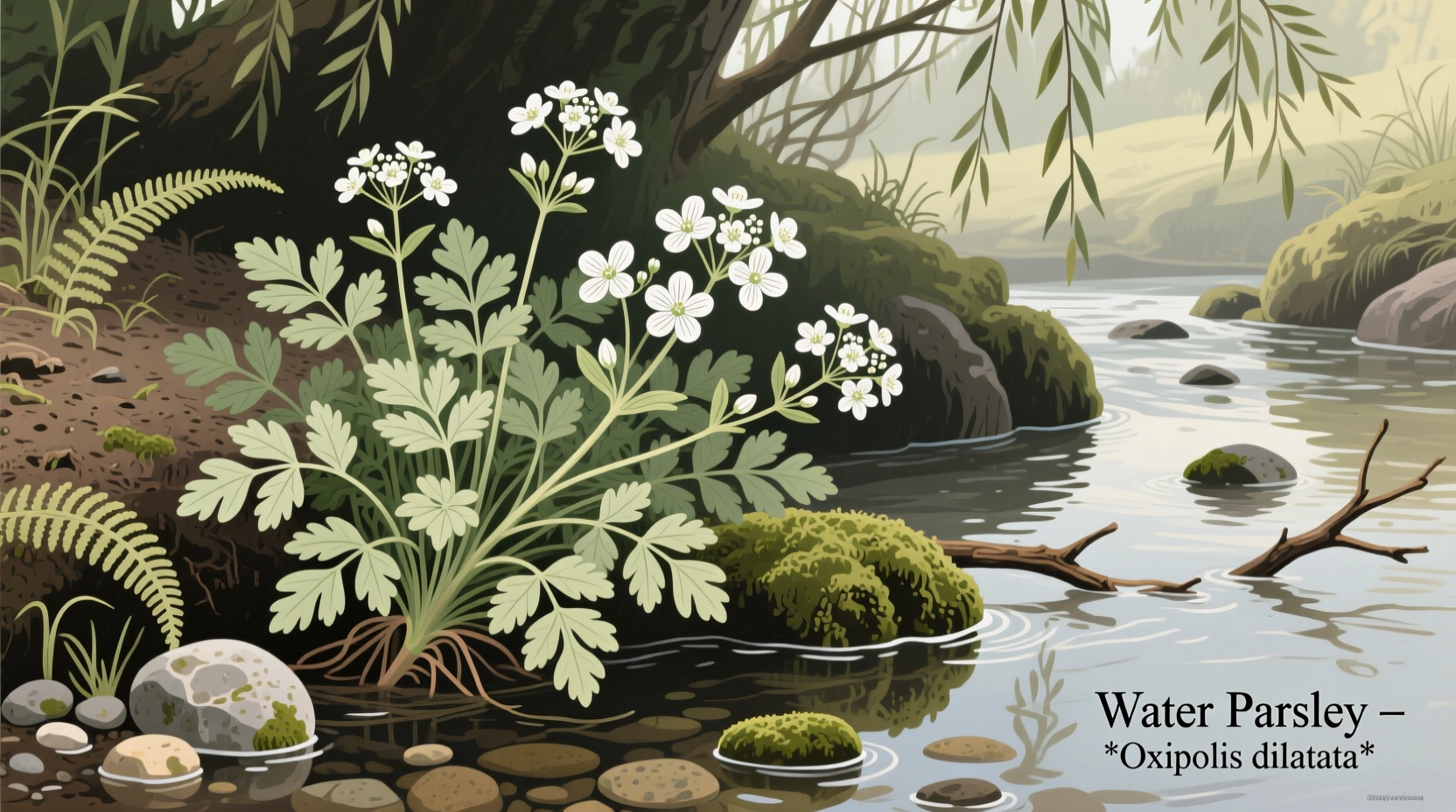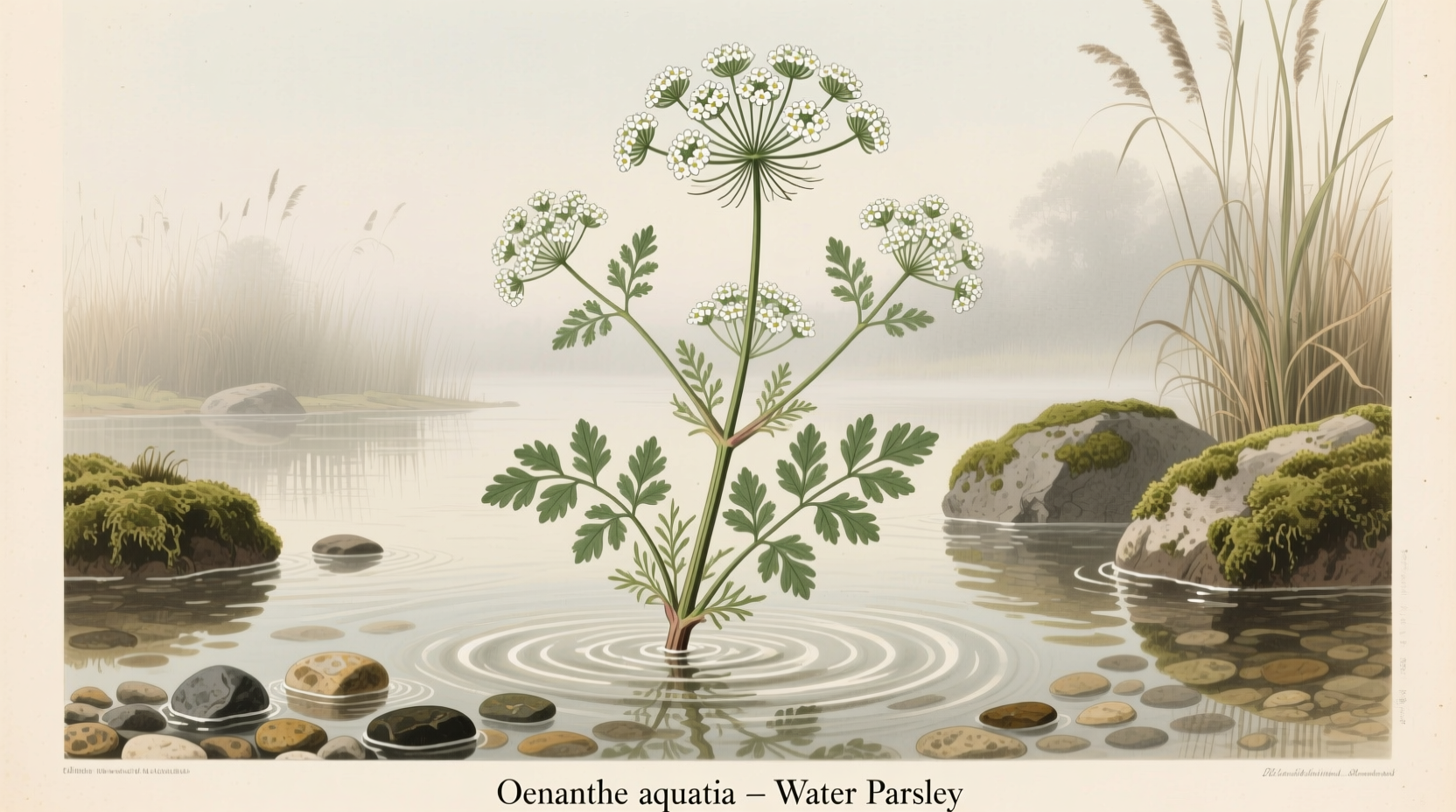Discover everything you need to know about water parsley, from precise identification techniques to habitat patterns and crucial safety distinctions from toxic look-alikes. This comprehensive guide delivers field-tested knowledge for botanists, foragers, and nature enthusiasts seeking accurate information about this wetland plant.
What Exactly Is Water Parsley?
Water parsley (Oenanthe sarmentosa) belongs to the Apiaceae family, sharing botanical characteristics with carrots, celery, and parsley. This perennial plant thrives in consistently moist environments across western North America, from Alaska to California. Unlike many of its relatives in the carrot family, water parsley maintains a non-toxic profile, making proper identification essential for anyone exploring wetland flora.
According to the USDA Plants Database, water parsley demonstrates specific morphological traits that distinguish it from dangerous counterparts like water hemlock (Cicuta species). The plant typically reaches 1-3 feet in height with smooth, hairless stems that branch extensively near the top. Its compound leaves feature multiple leaflets with serrated edges, creating a feathery appearance that gives the plant its common name.

Field Identification: Key Characteristics
Accurate identification requires examining multiple plant features simultaneously. Water parsley's distinctive characteristics appear consistently across its native range, providing reliable markers for safe recognition.
| Feature | Water Parsley | Water Hemlock (Toxic) |
|---|---|---|
| Stem Structure | Hollow without internal chambers | Hollow with distinct partitions/chambers |
| Stem Coloring | Purple spots at base | Smooth green, sometimes purple-striped |
| Leaf Arrangement | Compound leaves with serrated edges | Shiny, smooth-edged compound leaves |
| Flower Clusters | Small white flowers in umbrella-shaped clusters | Small white flowers in umbrella-shaped clusters |
| Root System | Thin, fibrous roots | Chambered tubers with pleasant odor |
Habitat and Geographic Distribution
Water parsley exclusively inhabits consistently moist environments, making its location predictable for those exploring western North American ecosystems. The Burke Museum at the University of Washington documents its prevalence in:
- Stream banks and river edges
- Marshy meadows and wetlands
- Lakeshore vegetation zones
- Damp forest clearings near water sources
This plant demonstrates remarkable adaptability within its moisture requirements, thriving from sea level to subalpine elevations. Its geographic range extends from southern Alaska through British Columbia, Washington, Oregon, and into northern California. Unlike invasive species that disrupt ecosystems, water parsley serves as a valuable native component of healthy riparian habitats.
Safety First: Distinguishing Water Parsley from Toxic Look-Alikes
The most critical aspect of water parsley knowledge involves distinguishing it from water hemlock, one of North America's most toxic plants. The California Department of Fish and Wildlife emphasizes that misidentification can have severe consequences, as water hemlock contains cicutoxin that affects the central nervous system.
Field verification requires examining the stem structure - water parsley stems remain completely hollow without internal partitions, while water hemlock stems contain distinctive chambered segments. Additionally, water parsley stems typically display purple spotting at the base, whereas water hemlock stems maintain a smooth green appearance, sometimes with purple striping.
When foraging in wetland areas, always apply the triple-check method:
- Verify stem structure by gently splitting a small section
- Confirm leaf edge characteristics (serrated vs. smooth)
- Cross-reference with multiple field guides before consumption
Ecological Importance and Natural History
Water parsley plays a vital role in maintaining healthy wetland ecosystems. According to research published in the Journal of Wetland Ecology, this native species contributes to bank stabilization along waterways, preventing erosion through its fibrous root system. The plant serves as a food source for various wildlife species, including:
- Deer and elk that browse the foliage
- Butterfly larvae that feed on the leaves
- Birds that utilize the seeds as food
- Aquatic insects that shelter among the stems
Unlike invasive species that dominate ecosystems, water parsley coexists with other native plants, contributing to biodiversity rather than diminishing it. Its presence often indicates a healthy, undisturbed wetland environment - a valuable indicator for conservationists assessing habitat quality.
Historical and Contemporary Uses
While not commonly used in modern cuisine, historical records from indigenous communities in the Pacific Northwest document limited traditional applications of water parsley. The ethnobotanical research conducted by the University of Washington's Burke Museum notes that some coastal tribes used young shoots sparingly as a flavoring agent, though it never became a staple food source.
Contemporary applications focus primarily on ecological restoration projects. Conservation organizations like the Nature Conservancy include water parsley in native plant mixes for wetland restoration due to its:
- Erosion control capabilities
- Adaptability to wet conditions
- Value to native wildlife
- Non-invasive growth pattern
Unlike many edible wild plants, water parsley lacks significant culinary value, making foraging primarily an educational rather than gastronomic pursuit. Its subtle parsley-like flavor doesn't justify the identification risks when safer alternatives exist.
Practical Identification Tips for Field Exploration
When encountering potential water parsley in the field, follow these verification steps to ensure accurate identification:
- Seasonal Timing: Look for mature plants between May and August when flowering occurs
- Habitat Check: Confirm you're in consistently moist soil near water sources
- Stem Examination: Gently split a stem section to check for internal chambers
- Leaf Analysis: Verify compound leaves with distinctly serrated edges
- Flower Confirmation: Look for small white flowers arranged in umbrella-shaped clusters
Carry a regional field guide specific to your location, as plant characteristics can vary slightly across the species' range. The Calflora database recommends photographing multiple plant features for later verification when uncertain.











 浙公网安备
33010002000092号
浙公网安备
33010002000092号 浙B2-20120091-4
浙B2-20120091-4